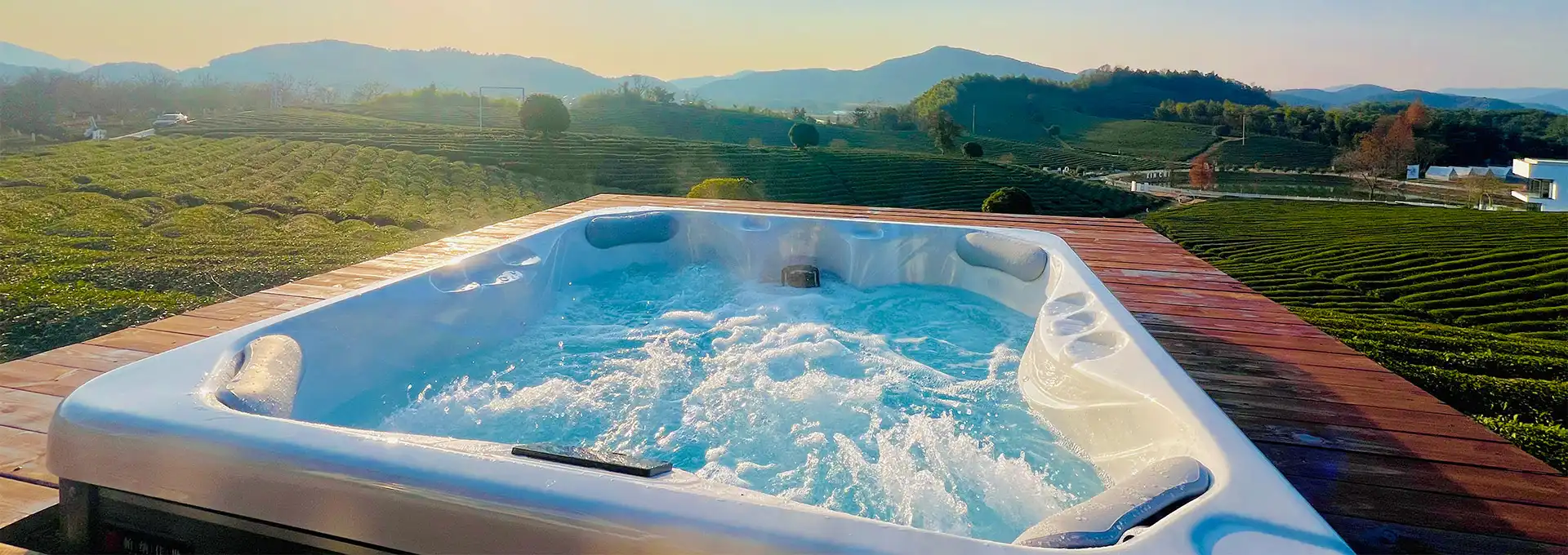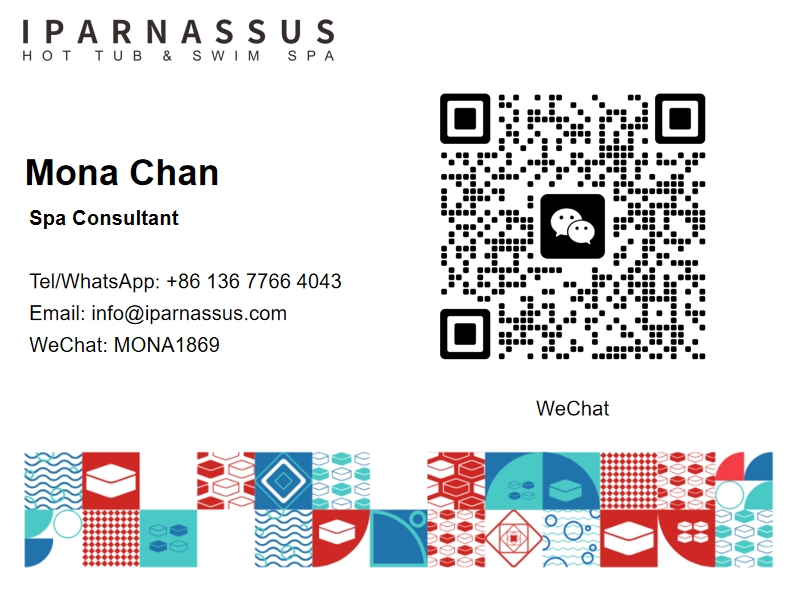What to look for in buying a hot tub?
2025-07-10 22:26:41
Purchasing a hot tub represents a significant investment in your home's comfort, entertainment value, and overall lifestyle enhancement. With numerous models, features, and price points available in today's market, understanding what to look for in buying a hot tub becomes crucial for making an informed decision that meets your specific needs and budget. From evaluating size and seating capacity to assessing energy efficiency and maintenance requirements, prospective hot tub buyers must consider multiple factors to ensure their purchase delivers years of relaxation and enjoyment. This comprehensive guide explores the essential criteria for selecting the perfect hot tub for your home and family.
What Size Hot Tub Should I Buy?
Determining Your Space Requirements
The physical dimensions of your hot tub installation area directly influence your purchasing decision, as proper sizing ensures optimal placement and accessibility. Most residential hot tubs range from compact two-person models measuring 5x5 feet to large family units spanning 8x8 feet or more. When evaluating space requirements, consider not only the hot tub footprint but also necessary clearances for equipment access, electrical connections, and safe entry and exit. Indoor installations require ceiling height considerations, while outdoor placements need adequate foundation support and utility access. Professional site evaluation helps determine the maximum hot tub size your space can accommodate while maintaining proper functionality and safety standards.
Matching Capacity to Usage Patterns
Your hot tub's seating capacity should align with your typical usage patterns and entertainment needs to maximize enjoyment and value. Smaller hot tubs accommodating 2-4 people work well for couples or small families seeking intimate relaxation experiences. Medium-sized models seating 5-6 people provide versatility for family use and occasional entertaining. Large hot tubs accommodating 7-8 people excel for frequent entertainment and larger families but require more maintenance and higher operating costs. Consider your lifestyle honestly when selecting capacity, as oversized hot tubs can become burdensome to maintain, while undersized models may limit your enjoyment and social opportunities.
Future Needs and Flexibility
Smart hot tub buyers consider their evolving needs over the spa's 15-20 year lifespan when selecting size and features. Growing families may benefit from slightly larger models that accommodate children as they mature. Active entertainers should prioritize seating arrangements and social features that enhance group experiences. Consider how your living situation might change, including potential moves, family additions, or changing physical abilities that could affect hot tub accessibility. Investing in a slightly larger, more feature-rich hot tub often proves more cost-effective than upgrading within a few years, provided the initial investment fits your budget and space constraints.
How Much Should I Spend on a Hot Tub?
Understanding Price Ranges and Value
Hot tub pricing varies dramatically based on size, features, brand reputation, and construction quality, typically ranging from $3,000 for basic models to $15,000+ for premium luxury units. Entry-level hot tubs offer basic hydrotherapy and heating functions suitable for occasional use, while mid-range models ($6,000-$10,000) provide better insulation, more jets, and enhanced durability for regular use. Premium hot tubs feature advanced control systems, superior insulation, high-end materials, and comprehensive warranties that justify higher initial costs through improved performance and longevity. Understanding these price tiers helps buyers align their expectations with their budget while avoiding overspending on unnecessary features or underspending on essential quality components.
Calculating Total Ownership Costs
Beyond the initial purchase price, hot tub ownership involves ongoing costs that significantly impact your total investment over time. Monthly electricity costs for heating and filtration typically range from $25-$75 depending on usage, climate, and energy efficiency ratings. Chemical treatments, filter replacements, and routine maintenance add $20-$40 monthly to operating expenses. Professional service calls, cover replacements, and component repairs contribute additional costs over the spa's lifetime. When budgeting for a hot tub, calculate these ongoing expenses alongside the purchase price to ensure long-term affordability and avoid financial strain that could diminish your enjoyment of the investment.
Financing Options and Payment Strategies
Many hot tub dealers offer financing programs that make premium models accessible through manageable monthly payments rather than large upfront costs. Zero-percent financing promotions can provide excellent value for qualified buyers, while traditional financing terms typically range from 12-84 months depending on credit qualifications. Some buyers prefer using home equity loans or lines of credit for hot tub purchases, as these may offer lower interest rates and tax advantages. Consider seasonal promotions, trade-in allowances, and package deals that include installation, startup chemicals, and accessories to maximize your purchasing power and overall value.
What Features Are Most Important in a Hot Tub?
Hydrotherapy and Jet Systems
The quality and configuration of your hot tub's jet system directly impacts the therapeutic benefits and overall user experience. Modern hot tubs feature various jet types including directional, rotational, and pulsating options that target different muscle groups and provide customizable massage experiences. Premium models offer adjustable jets that allow users to control intensity and direction for personalized hydrotherapy sessions. Consider the total number of jets, their placement for optimal coverage, and the pump power that drives the system when evaluating different hot tub models. Quality jet systems should provide consistent pressure, quiet operation, and easy maintenance access for long-term reliability and satisfaction.
Insulation and Energy Efficiency
Superior insulation technology significantly reduces operating costs while improving heating performance and extending equipment life in quality hot tubs. Full-foam insulation provides the best thermal retention but can complicate future repairs, while multi-layer insulation systems offer good efficiency with better service access. Look for hot tubs with insulated covers, thermal locking systems, and energy-efficient pumps and heaters that minimize electricity consumption. ENERGY STAR certified models demonstrate superior efficiency standards and often qualify for utility rebates. Efficient hot tubs maintain temperature more consistently, reduce environmental impact, and provide substantial savings over their operational lifetime, making energy efficiency a crucial purchasing consideration.
Control Systems and Smart Features
Modern hot tub control systems offer convenience, reliability, and advanced features that enhance the ownership experience through intuitive operation and remote monitoring capabilities. Digital controls should provide clear displays, simple programming, and reliable performance in various weather conditions. Smart-enabled hot tubs allow remote temperature adjustment, maintenance scheduling, and system monitoring through smartphone apps. Advanced features like LED lighting systems, Bluetooth audio integration, and automated chemical dispensing add luxury and convenience to your spa experience. When evaluating control systems, prioritize user-friendly interfaces, proven reliability, and compatibility with your technology preferences for optimal long-term satisfaction.
Conclusion
Selecting the right hot tub requires careful consideration of size, budget, and essential features that align with your lifestyle and long-term needs. By evaluating space requirements, understanding total ownership costs, and prioritizing key features like hydrotherapy systems and energy efficiency, buyers can make informed decisions that deliver lasting satisfaction and value.
Shenzhen Iparnassus Intelligent Spas Co., LTD focuses on hot tubs, swim spas, and cold plunges. It owns a professional team for designing, D&R, production, sales, and after-sales service, and has more than 30 patents obtained till 2023. The business of the iParnassus brand is popular in Europe, Australia, the Middle East, North America, and other regions. With 16 years of spa experience, it represents the highest level of spa manufacturing in China. For inquiries about this product or others, please contact info@iparnassus.com for dedicated service.
References
1. Williams, J. & Chen, M. (2023). Consumer Guide to Hot Tub Selection and Installation. Home Improvement Quarterly, 34(2), 78-94.
2. Roberts, K. (2022). Energy Efficiency Standards in Residential Spa Equipment. Journal of Sustainable Home Technologies, 18(4), 145-162.
3. Patterson, L. (2021). Hot Tub Size and Capacity Planning for Residential Applications. Spa Industry Review, 29(7), 112-128.
4. Thompson, D. & Martinez, R. (2023). Total Cost of Ownership Analysis for Hot Tub Buyers. Consumer Financial Planning, 41(3), 203-219.
5. Anderson, S. (2022). Hydrotherapy Features and Health Benefits in Modern Hot Tub Design. Wellness Technology Journal, 15(6), 89-105.
6. Davis, P. (2021). Smart Home Integration in Hot Tub Control Systems. Home Automation Review, 23(9), 167-184.



